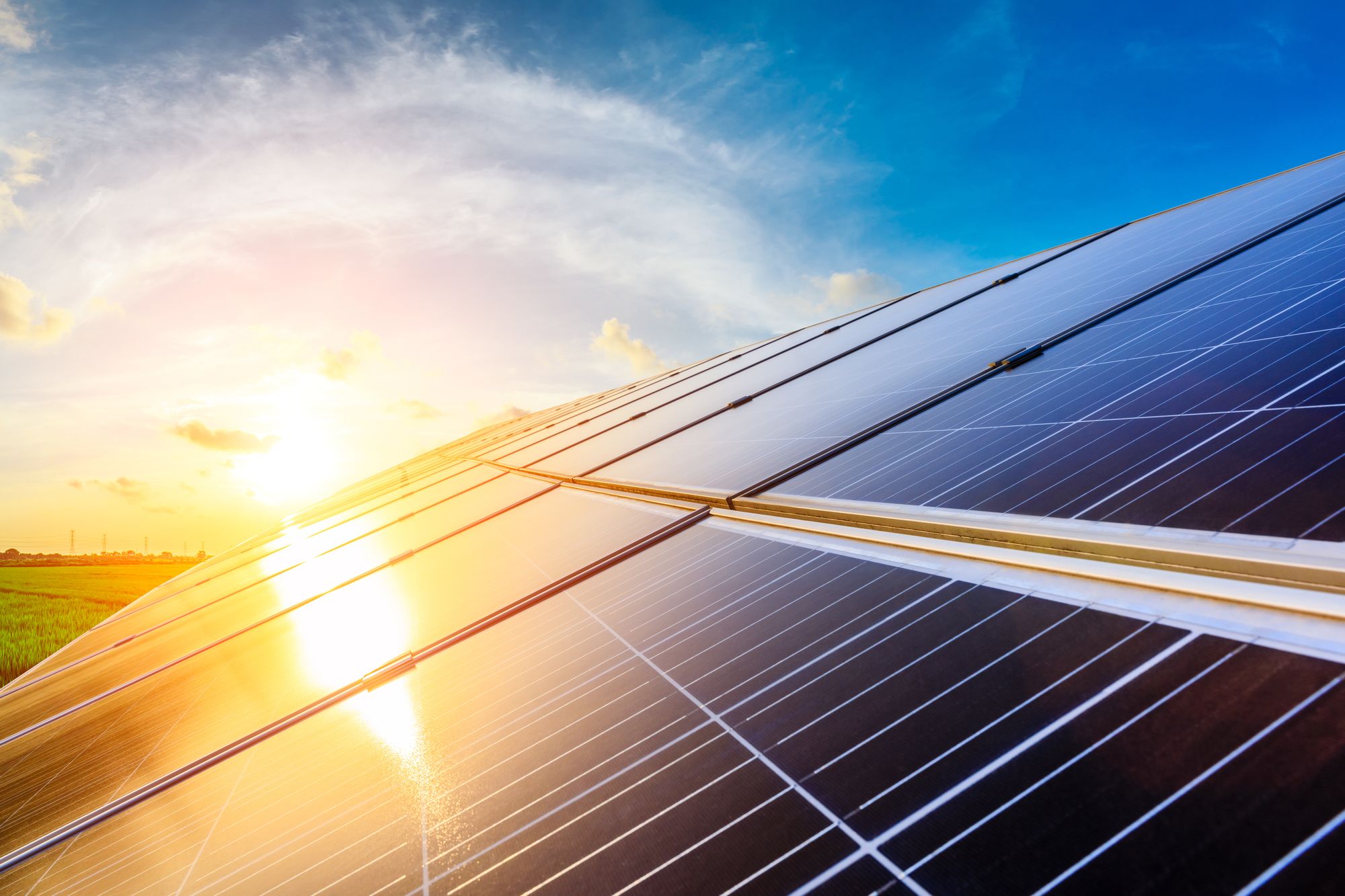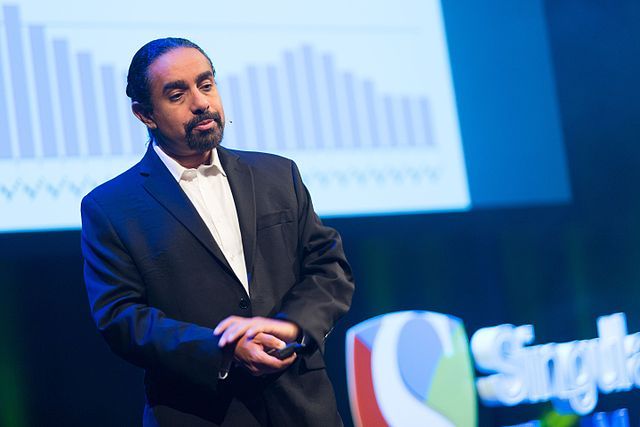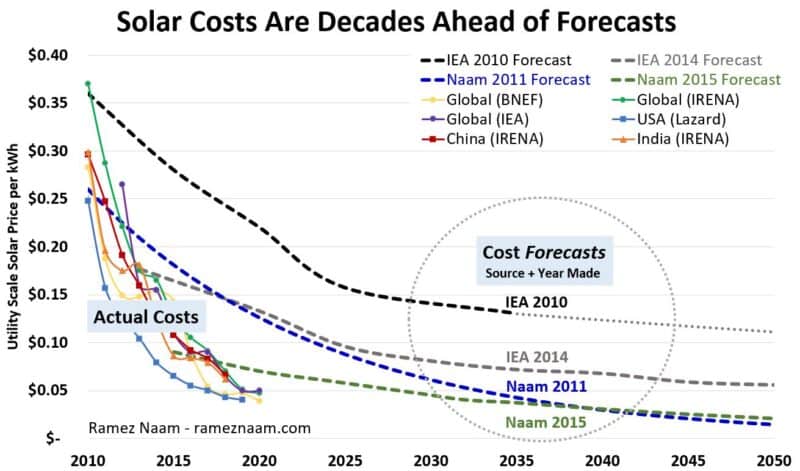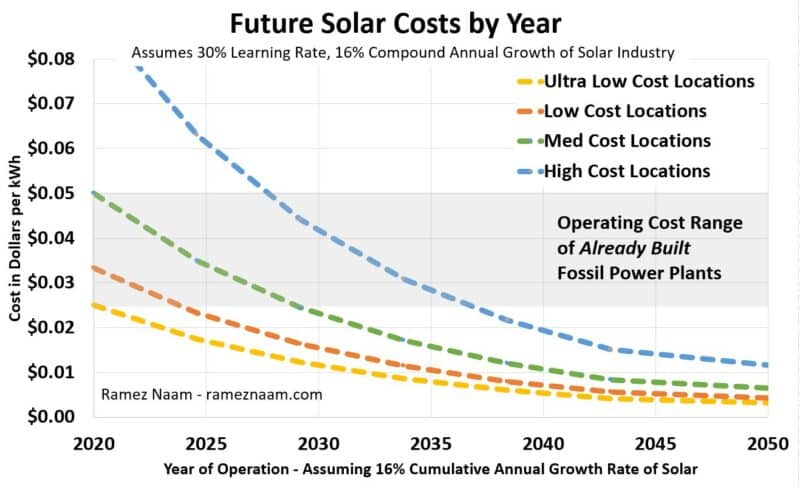
🌞 Insanely low solar prices
Even the most optimistic forecasters have been wrong, the price of solar energy has dropped even faster. Soon it is cheaper to build new solar energy than to retain existing coal and gas.
Share this story!
Ramez Naam has been called a naive optimist for his forecasts of how quickly the price of solar energy will fall. Of all the forecasters, he has been the most extreme.
Naam has been naive, but not a naive optimist.
He has been a naive pessimist.
Prices have fallen even more and even faster.
The sun is by far our largest source of energy. If we could capture 0.02 percent of all solar energy reaching the earth, it would cover our entire energy needs. 112 hours of sunlight is as much energy as we know that is stored in all known oil, coal and natural gas on earth.

Ramez Naam is an investor, lecturer, author and affiliate of Singularity University. In 2011, he made his first forecast for solar energy. In it, he said that the price of solar energy would more than halve, from about 27 cents per kilowatt-hour, kWh, in 2010 to 13 cents in 2020. That was about half of what the International Energy Agency, IEA, believed in its forecast from the year before.
In 2015 Naam issued an updated forecast. Now he thought that the price in 2020 would be 7-8 cents per kWh. The IEA had revised its forecast the year before and had then reached about 13 cents per kWh in 2020. Thus in line with Naam's first forecast.
Now we are here, 2020, and can evaluate their forecasts. The price is now around 4-5 cents per kWh. Naam summarizes himself:
– 7 to 10 years ahead of what I forecast in 2015.
– 10 to 15 years ahead of what I forecast in 2011.
– 30 to 40 years ahead of what the IEA forecast in its 2014 Solar Technology Roadmap.
– 50 to 100 years ahead of what the IEA forecast in its 2010 World Energy Outlook.

The reason for this is Wright's law, which I wrote about earlier in this article.
For each doubling of production, the associated cost drops by a certain percentage. In this rule of thumb, it is 20 percent.
If we have so far produced 1000 units of a product, then the cost per unit will decrease by 20% when production reaches 2000 units. Another 20% reduction happens at 4,000, then another at 8,000, and so on.
Instead of twenty percent as in the rule of thumb, the price of solar energy drops by between 30 and 40 percent per doubling. Higher than anyone thought. This explains the extremely rapid price fall.
Today, solar accounts for two percent of global electricity generation. If we expect a 30 percent price reduction for a doubling, it means that the price of solar energy will have halved from today's level when we reach the point where solar accounts for seven to eight percent of global electricity generation.
Then solar energy will cost as little as 1-2 cents per kWh in the cheapest and sunniest places in the world and 4-5 cents in the most expensive places.
When we will get there it is hard to say, as the failed forecasts show. If we use the IEA's 16 percent growth per year, the electricity price will reach 1 cent per kWh in the cheapest countries around 2030. The same year the price in the most expensive countries is 4 cents.

Then the price of solar energy will have reached such a low level that we will be entering what Ramez Naam calls the third phase of renewable energy.
In phase one, renewable energy is dependent on policy decisions and financial support.
In phase two, it is cheaper to build renewable energy production than to build new gas and coal energy production.
In the third phase, it is cheaper to build new renewable energy production than it is to continue to run existing coal and gas energy production.
With these figures in mind, it seems very risky to invest in new coal and gas already now. Although the investment might be profitable for a few years, it risks being disrupted very soon.
The future seems bright.
For a more in-depth analysis, I recommed reading Naam's entire blog post.
On YouTube you can find several of his talks, all very good.
By becoming a premium supporter, you help in the creation and sharing of fact-based optimistic news all over the world.


